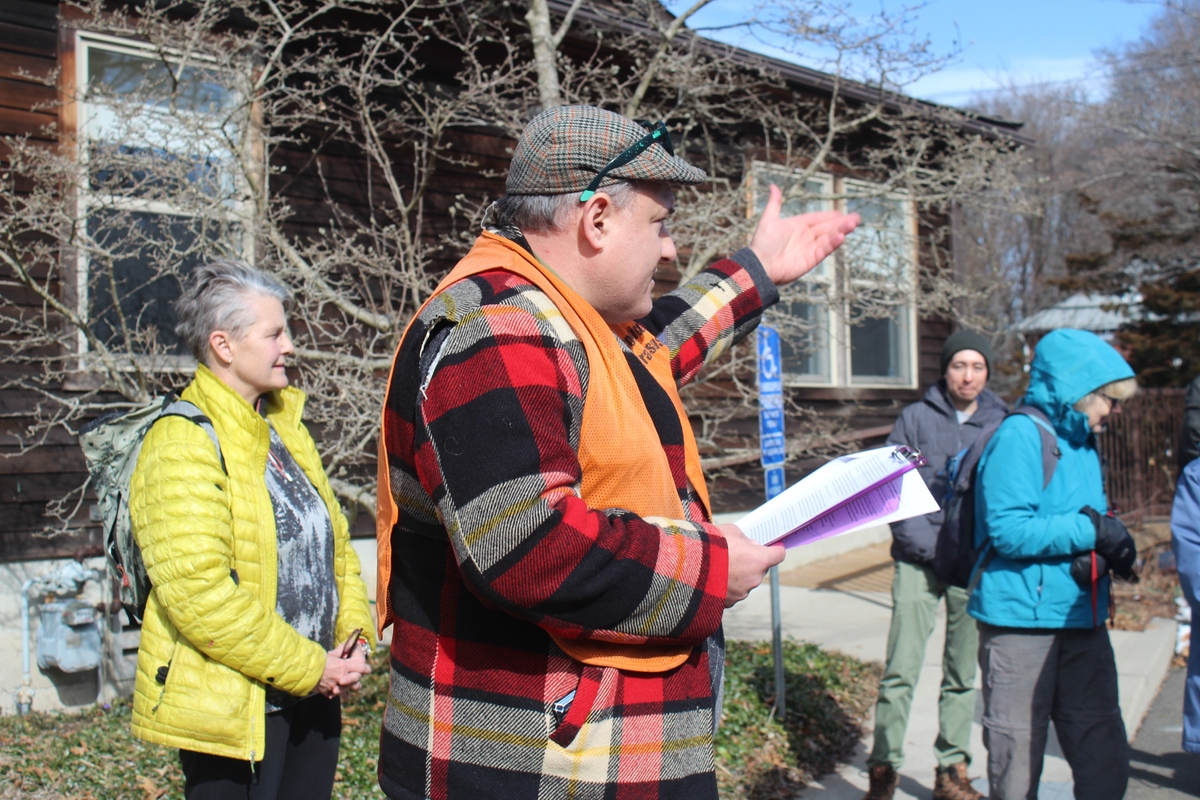
Brian Slattery Photo
Goode leads group into woods.
Aaron Goode of the New Haven Bioregional Group smiled at the roughly 30 people assembled in the parking lot of New Haven Friends Meeting on Grand Avenue in Fair Haven Heights, ready to hike.
“Welcome to New Haven’s own Jurassic Park,” he said, explaining that the sign-in sheet people had signed also doubled as a “liability release” in case of dinosaur attack. He then corrected himself; if he were being more accurate, it would have to be called Upper Triassic Park, for the age of the rocks — and the fossils — that were found behind him in Quarry Park, a city park and site of a previous Bioregional hike last year.
The group gathered Saturday to learn more about the ways geology, ecology, and economics had shaped the landscape of Quarry Park, the greater New Haven area, and beyond.
The hike was led by Goode, Tracy Blanford of the Friends of Quarry Park, and Daniel May, an earth scientist and professor at the University of New Haven.
Blanford began with an overview of the human history of the park, which she, Goode, and May elaborated upon over the course of the hike.
Before colonization, the park was part of Quinnipiac territory, and the park itself has evidence of trails that served to connect the Quinnipiac with communities farther north. With the arrival of colonizers, the park became part of the 1,200 acres that constituted the first reservation in 1638. The Puritans forced the Quinnipiac onto the land that the Puritans couldn’t use as farmland; when it was discovered that the stone there could be useful for quarrying, the reservation was taken away, too. The Quinnipiac had dwindled in number by then. Only 71 remained in 1774, and the last member of the nation died in 1850.
The land was a quarrying site from the 1700s until the early 1900s. Those engaged in the quarrying work — which involved extracting minerals and rock from the earth — ranged from small, possibly family operations to, for a time, larger companies. Much of that stone ended up in New Haven buildings. “If you ever see a building that’s dark red or chalk, chances are it’s from this quarry,” May said.
That the site wasn’t thoroughly quarried is owed to the discovery of better stone for building not very far away. “As soon as they figured out how to get stone out of Middletown” and Branford, May said — which both had harder, tougher stone, some of which is now the foundation for the Statue of Liberty and the Brooklyn Bridge — large-scale quarrying in New Haven proper largely stopped.
A few decades ago there was interest in putting a housing development on the site, but that didn’t come to pass. With the end of quarrying and building interest in the land came also the end of clear-cutting it. May estimated that the current forest is only several decades old.
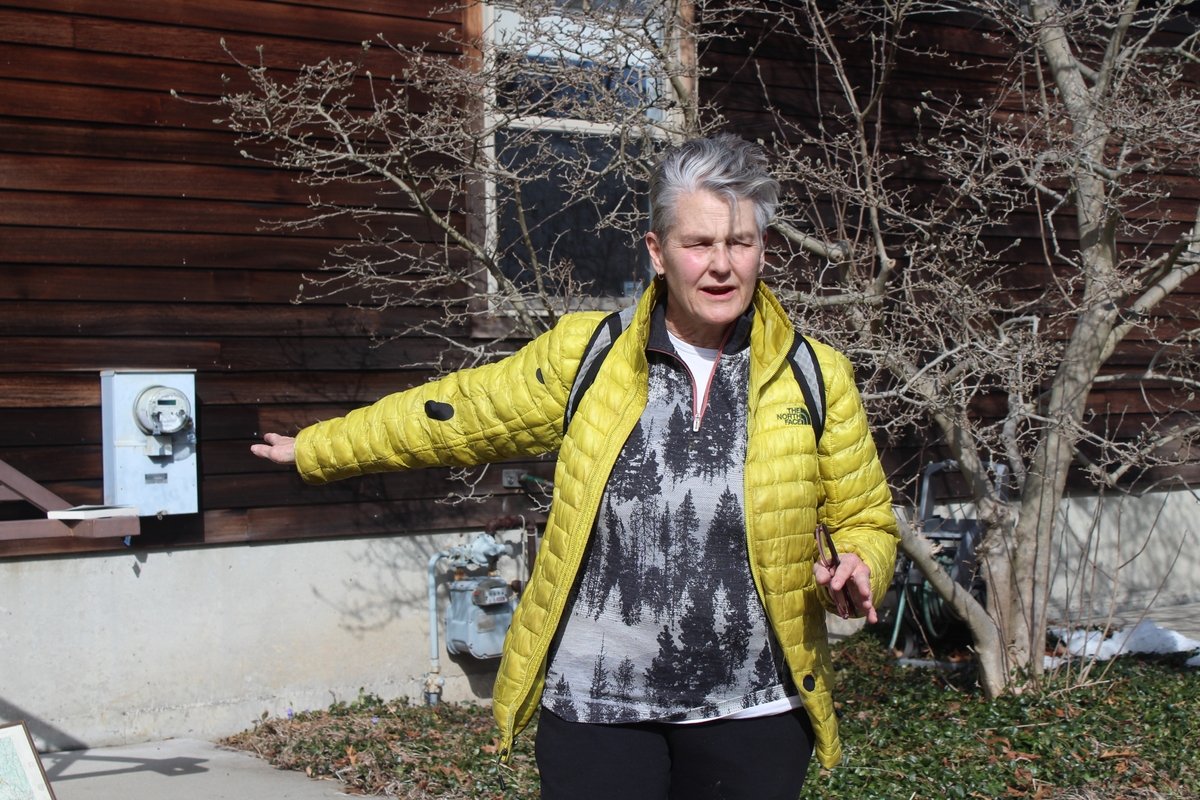
Blanford.
Today, Blanford heads up the Friends of Quarry Park, which works to clear invasive species and maintain the trails every Thursday from 3 to 5 p.m. They’re also lobbying the city to get better signage and a couple parking spaces on Russell Street, the park’s official entrance. As humans have effectively left the park for decades, it has become a young forest again, and wildlife has returned, including coyotes and ravens.

May.
May overlaid the human history of the park with its much longer geological history. Quarry Park — and much of New Haven — is part of the New Haven-Hartford Basin, a swath of land about five to six miles wide that extends roughly northward from the Long Island Sound. It was formed when a “portion of the earth opened up” creating large lava flows that shaped the landscape, forming, for starters, East Rock and West Rock. The basin then filled with sediment, about 208 million years ago. Most of the area contains “soft rocks as a rule,” May said, “the bottom of a river that’s been cemented together.” That layer is almost 10,000 feet thick.
The “most important event in Connecticut geological history,” however, occurred about 2 million years ago, May said. That was an ice age that brought glaciers down from the north. They covered what’s now Connecticut and halted at Long Island, depositing a “big pile of glacial debris” there and then scooping out the land behind it to form the Long Island Sound, which at the time of its creation was a freshwater “glacial lake.” Geologically speaking, “it has only recently become marine” when it joined with the nearby ocean. The topography the glaciers left behind, a system of ridges and valleys, are the reason “it’s easy to go north-south, but not east-west,” in the state. “It’s easier to follow the grain.”
Today, an ice age and several quarrying operations later, Quarry Park’s rocks ranged from “coarse” to “silts and muds.” The finer-grained rocks were most likely to contain fossils, such as the specimen of Aetosaurus Arcuatus that paleontologist O.C. Marsh of the Peabody claimed in 1896. It’s considered among the first land reptiles; “imagine a stubby alligator,” May said. Marsh was engaged in “bone wars” for fossils with other paleontologists, and part of that war involved enlisting those who did quarrying to call him first if they found anything interesting, on the promise that he’d pay “top dollar” for any specimens.
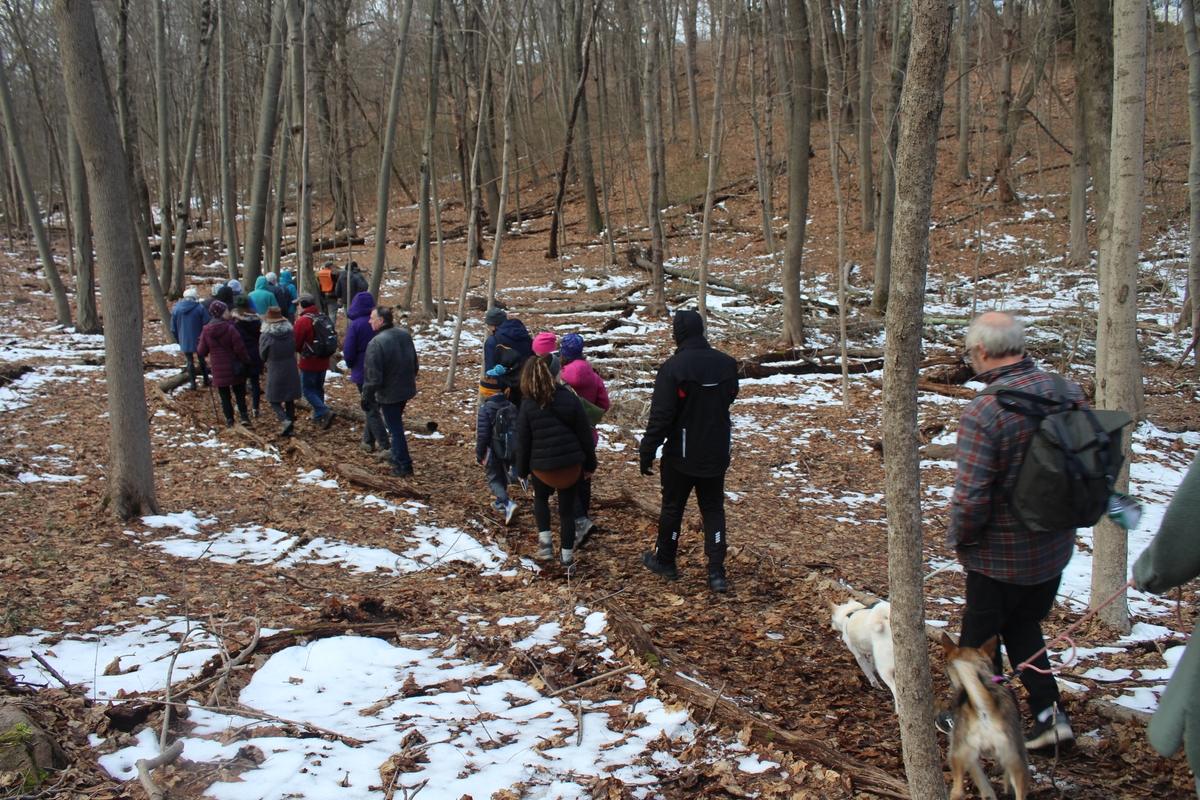
As interesting as the history was the experience of the park itself, an unexpectedly large tract of wooded land winding through Fair Haven Heights.

Blanford and Goode pointed out that the city-owned land that comprises the park is contiguous with wooded land owned by New Haven Terminal that is even larger than the park, creating a nearly unbroken swath of green space in New Haven that reaches north to Grand Avenue, south to I‑95, east to the border with East Haven, and west to Benjamin Jepsen Magnet School at the intersection of Lexington Avenue and Russell Street.
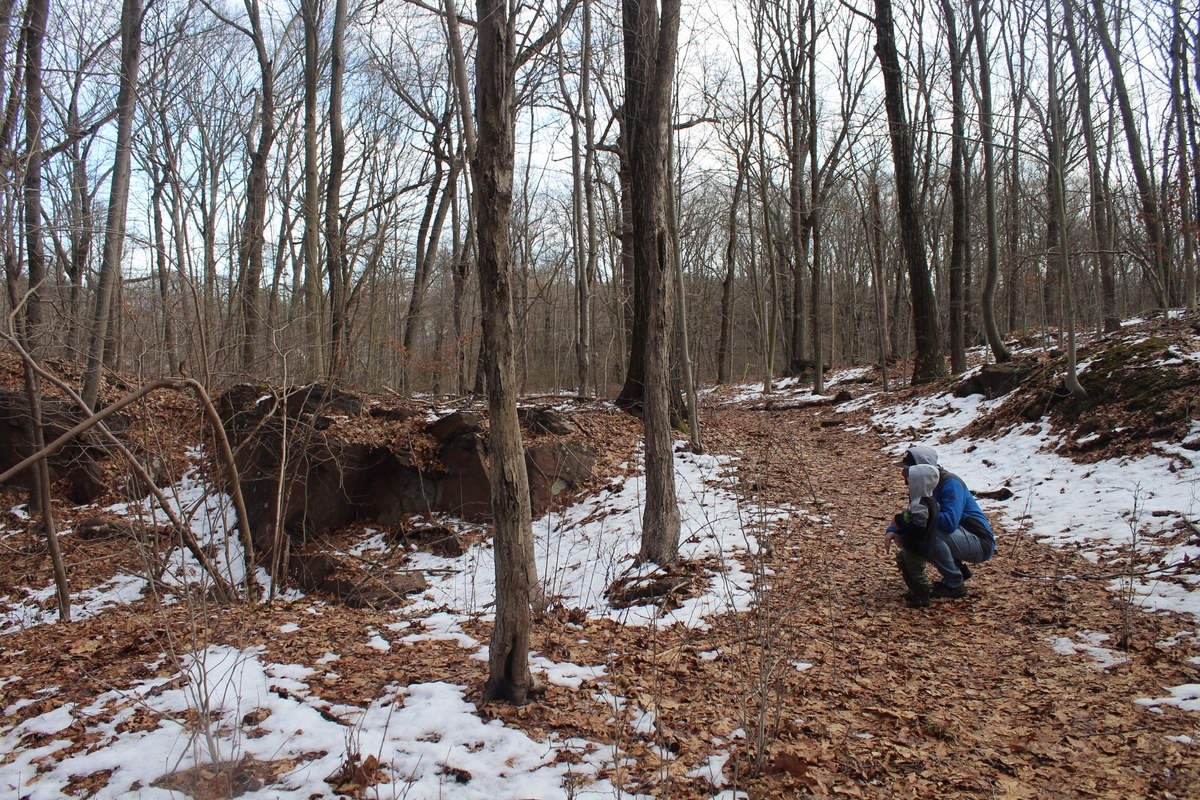
May remarked that the park was one of the more interesting places in the city to appreciate the area’s geology. “This is about the best place to look at this sandstone that I’m familiar with,” he said. This was borne out by even an untrained observation of the landscape. The trail through Quarry Park runs through a gentle sloping ravine punctuated by rock outcroppings of a kind that draw the eye even of people like this reporter, who doesn’t really know what he’s looking at but does appreciate it when a park doesn’t look quite like other parks in the area.

Some of the rocks, to May, didn’t seem like they’d arrived at their current positions through natural processes. He speculated that they had been moved there by some of the larger quarrying operations but never actually removed from the gully. These included a rock that apparently had somehow interrupted a tree’s growth; the rock stayed where it was, and the tree grew around it. May noted that most of the quarry work had been done without automated equipment; it was all done under human and animal power.
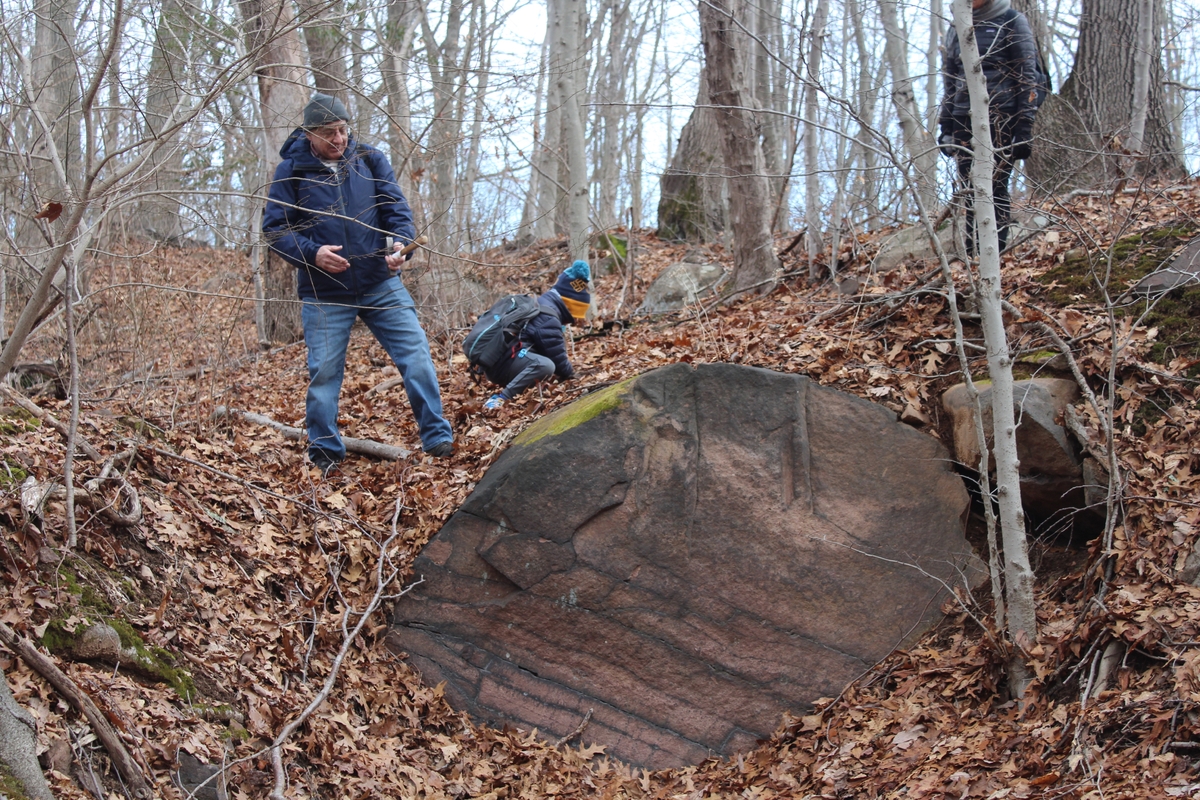
Other rock outcroppings were a chance for May to show how the Ice Age had transformed the landscape, from enormous changes like the formation of Long Island Sound to more local changes, like the polishing of a rock face.
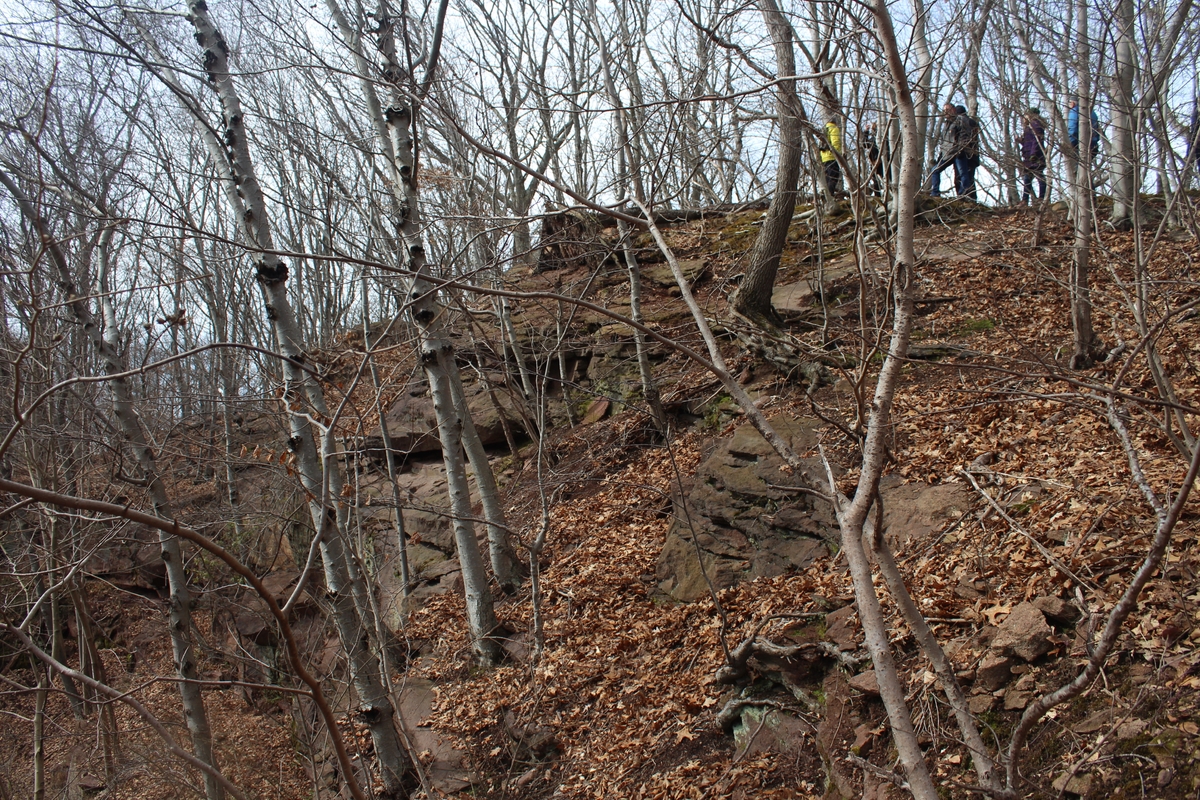
Hikers at the main quarry's edge.
In time the hike arrived at the edge of what had been the largest quarrying operation in the area, which was now a very impressive, steep-walled gully of maybe 50 feet from its highest point to its bottom. Standing on the lip, it was possible to see all the aspects of the land that Goode, Blanford, and May had discussed, but most of all, the startling sense of sudden wildness so close to paved surfaces. At the bottom of the gully, not far away, the woods broke against the edge of the backyard of a house on Russell Street. Off to the right, though, the corridor of woods continued, the land undulating in ways that would be difficult to navigate, with no buildings in sight.
“I had no idea this was here,” one hiker said.


Fair Haven Heights is a corner of town that many people don't even know exists and yet it is the site of so much history, starting with the Quinnipiac natives who taught the colonists how to cultivate oysters from which developed a robust oyster village on both sides of the Q. River until industrialization and pollution caused a decline.
There are architectural gems scattered all around the neighborhood, a marker for the Davenport Farm hidden near a condominium on the water, the Fargeorge Nature Preserve and some new mini gardens of recent vintage, along with established parks getting new love and attention
I joined this walk in the woods about 2 years ago and it was fascinating.